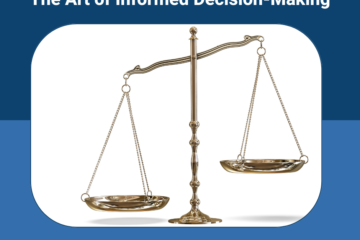
Introduction:
Problem Solving is an important skill for both personal and business life. Whether you face problems at work, at home, or anywhere else in your life, knowing how to solve them well can make a big difference. In this blog post, we’ll look at Min Basadur’s Simplex problem-solving model. It’s a powerful eight-step method for finding, analyzing, and fixing problems in a systematic way.
The Simplex Process: Understanding the Eight Steps
The Simplex process is a structured way to solve problems that makes sure choices are well-informed and work. Let’s look at each step of the Simplex model and the tools and techniques you can use for each one.
Step 1: Find the Problem
Problem-solving works best when problems are found ahead of time. Even if everything seems to be going well, looking for potential problems can help you escape emergencies and stay in charge when problems come up. Here are some ways to help you figure out what’s wrong:
PEST Analysis:
Use this tool to keep track of changes in your environment, your customers’ needs, the way the market works, and the trends in your business.
Risk analysis:
Figure out which business risks are the most important so you can deal with them before they become problems.
Failure Modes and Effects Analysis:
Pinpoint possible points of failure in your business processes to avoid future problems.
After Action Reviews:
Look at how things went in the past to see where they could be better in the future.
Prioritization and Pareto Analysis:
Put the problems in order of importance so that you can work on the most important ones first.
Step 2: Find the Facts
Once you know there might be a problem, it’s important to find out more about it. Learn about what caused the problem, who was involved, what was done in the past to solve it, and how others see it. When you do a lot of study, you don’t have to rely on assumptions and narrow points of view. Here’s how to find out what’s going on:
Research Thoroughly:
To get a good understanding of the problem, spend time gathering knowledge from many different sources. Use online study, talk to people, look at relevant data, and look at old records. When you’re trying to solve a problem, you’ll be able to make better choices if you know more about it.
Engage Stakeholders:
Talk to people who are directly touched by the problem and people who know a lot about it. Their ideas can give important background information and put light on possible solutions.
Examine Case Studies:
Find case studies or examples of how similar problems have been solved in the past. Analyzing these cases can teach you important lessons and give you ideas for new ways to solve your own problems.
Consider Multiple Perspectives:
Think about things from different points of view. Don’t just stick to one point of view. Involve different people or groups in your study to get new ideas and different ways to look at the problem.
Validate Information:
Make sure the information you gather is correct and reliable. If you don’t want to make choices based on bad information, check the data and look at it from more than one source.
Remember that the key to handling problems well is to fully understand the problem. In this step of the Simplex model, you do the study that will help you find good solutions in the next steps.
Step 3: Define the Problem
After you know what the problem is, you need to clearly and fully describe it. A well-defined problem helps set clear limits and stops the project’s goals from growing. Use the following tools to get a clear picture of the problem:
CATWOE:
CATWOE is a useful tool that lets you look at a problem from six different points of view:
Customers:
Customers: Think about how the problem affects the customers, clients, or end-users who are directly affected by it.
Actors:
Figure out which people or groups in the business are part of the problem or have some control over it.
Transformation:
Look at the business tools or processes that are part of the problem.
Worldview:
Know how the problem fits into the bigger picture and what influences it from the outside.
Owner:
Figure out who is in charge of the problem and has the power to fix it.
Environment:
Think about things outside of the problem that might affect it.
By looking at the problem from these six points of view, you can get a full picture of it and find hidden problems.
Cause and Effect Analysis:
This tool helps you figure out what causes the problem and tell the difference between the signs and the real causes. Make a cause-and-effect diagram, also called a “fishbone diagram” or a “Ishikawa diagram,” to map out clearly the possible causes and how they relate to each other. If you do this, you can focus on fixing the real problems instead of just treating the symptoms.
By using CATWOE and Cause and Effect Analysis to define the problem, the next steps of the Simplex model are more likely to lead to good answers. A clear description makes sure that your efforts to solve a problem are focused, efficient, and aimed at the real problems.
Step 4: Find Ideas
With a clear definition of the problem, you can start thinking of possible answers. Think about the problem from different points of view and use metaphors and comparisons. These methods can help you come up with creative solutions:
Brainstorming and Reverse Brainstorming:
In brainstorming, a group of people come up with a lot of ideas without judging any of them. Encourage people to easily share their ideas, even if they seem crazy or out of the ordinary. In reverse brainstorming, on the other hand, you look for ways to make the problem worse instead of finding ways to solve it. By looking at things from the other side, you can find new insights that lead to creative answers.
Metaphors and Analogies:
Use metaphors and analogies to compare the present problem to others or to other situations. This kind of creative thinking can help you come up with new ideas and see the problem from different points of view.
Mind mapping:
To make a mind map, write the main problem in the middle of a page and connect it to connected ideas and possible solutions with lines. This picture lets you look at how different ideas are linked and find links you didn’t expect.
SCAMPER Technique:
SCAMPER is an acronym that means for Substitute, Combine, Adapt, Modify, Put to Another Use, Eliminate, and Reverse. Use these questions to think of creative ways to change parts of the problem or to look at it from different angles, which will help you come up with new ideas.
Role Playing:
Have people play different roles to look at the problem from different points of view. This method can help find different solutions based on how each job sees the problem.
Remember that the goal of this step is to come up with a lot of different ideas. Think outside the box and include different points of view to look at all the options. In the next steps of the Simplex model, you’ll look at these ideas and choose the best ones to move forward with.
Step 5: Select and Evaluate
After coming up with ideas, you’ll have a number of options that need to be weighed. Set criteria for a good answer and use techniques like Paired Comparison Analysis, Decision Matrix Analysis, and Risk Analysis. Here’s what you should do:
Set Evaluation Criteria:
Before evaluating the possible options, set clear criteria for evaluation. Think about things like how easy it is to do, how much it will cost, how it will affect partners, and how well it fits with the organization’s goals. This step makes sure you have a good way to compare and rank the different choices.
Paired Comparison Analysis:
This method lets you compare each solution to all the others and give each one a relative worth or value based on the criteria you set up. By systematically judging each pair of answers, you can put them in order of how well they work overall.
Decision Matrix Analysis:
Make a decision matrix that shows all possible solutions and their criteria or attributes. Give each measure a weight based on how important it is. Then, give each answer a score based on these factors. The grid gives you a way to compare and rank the choices in a way that is based on numbers.
Risk Analysis:
Analyze the possible risks of each option with a risk analysis. Identify possible obstacles, uncertainties, and potential negative outcomes. By knowing the risks, you can make plans to reduce them and make better choices.
Final Choice:
Once you’ve used the chosen methods to evaluate the options, pick the most promising ones that best meet the set criteria. At this time, don’t judge ideas too soon or get rid of them too soon, because that can kill creativity and leave out good options.
By using these evaluation methods, you can look at possible solutions in a systematic way and make choices based on facts. Remember that choosing the best answer is an important part of solving a problem, and that it will help you get closer to a good solution in the next steps of the Simplex model.
Step 6: Plan
When an answer is chosen, the implementation phase can begin. Planning and getting ready are very important. For small projects, do a Risk Analysis and make Action Plans. For bigger projects, look into more complex methods. What you have to do is:
Risk Analysis and Impact Analysis:
Before you start putting the plan into action, you should do a full Risk Analysis to look for possible problems, uncertainties, and challenges. Also, do an Impact Analysis to see how the proposed solution will affect different parts of the company. When you know about possible risks and their effects, you can make backup plans and plan for possible roadblocks.
Force Field Analysis:
This method helps you figure out what forces are driving the answer and what forces are holding it back. Find the things that help the suggested solution and the things that hurt it. By looking at these forces, you can come up with plans to strengthen the ones that help and deal with the ones that hurt.
Go/No-Go Decision:
Make a well-informed Go/No-Go Decision before fully agreeing to the implementation. Check to see if the benefits of going with the chosen choice outweigh the risks and costs that come with it. This choice makes sure that you use your resources wisely to go after the best answer.
Action Plans and Project Management:
For smaller projects, make detailed Action Plans that list the tasks, who is responsible for them, when they need to be done, and what tools are needed. For bigger, more complicated projects, you might want to use project management methods to make sure everything goes smoothly and the project is done well.
Change Management:
Be aware that putting any solution into place may require changes to processes, procedures, and the culture of the company. Plan for good Change Management to help with a smooth transition and get people on board.
By carefully planning the implementation phase, you set the stage for putting the chosen answer into action in a way that works. Thorough risk analysis and a “Go” or “No-Go” decision give you the confidence you need to move forward. Detailed action plans and change management strategies pave the way for the solution to fit into the company without any problems.
Step 7: Sell the Idea
For your answer to work, you must get stakeholders to agree with it. Anticipate resistance and consider all repercussions. Listen to what people say and make the changes that are needed. Here’s how to get people to buy into your idea:
Communicate Effectively:
Effective communication is the key to getting people to agree with your suggested solution. Change your message so that it speaks to the needs and worries of different stakeholders. Explain how the solution helps the company reach its goals and what its benefits are. Be open to comments and willing to make changes based on what stakeholders tell you.
Empathize and Address Concerns:
Put yourself in the shoes of your audience and try to see things from their point of view and understand any concerns they might have. Address their worries ahead of time and show why the proposed answer is the best way to move forward.
Build a Compelling Value Proposition:
Build a compelling value proposition by emphasizing the solution’s worth and how it will help different stakeholders. Show how the solution solves specific problems and contributes to the success of the company as a whole.
Involve Key Stakeholders:
Include key players from the start of the decision-making process. Ask them what they think and what they have to say. When stakeholders feel like they are part of the solution, they are more likely to back its implementation.
Adapt Your Message:
Tailor your communication style and content to suit different groups. Focus on the high-level strategic benefits for the executives, and on the practical effects and application details for the operational teams.
Use Visual Aids:
Use visual aids like charts, graphs, and infographics to make complex material easy to understand and interesting. Visual tools can help people understand and remember what you say better.
Address Possible Risks:
Point out and talk about any possible risks that come with the answer. Be honest about problems and show how you plan to solve them to show that you have thought about every part of the application.
By convincing stakeholders of the value of your idea, you make it more likely that the suggested solution will be accepted and used. Open and honest communication builds trust and support, which makes execution easier and makes it more likely that the desired results will be reached.
Step 8: Act
Lastly, move forward with action if all stakeholders agree. This is the most satisfying part of problem-solving because it’s where your work makes a real difference. Once the execution is done, get ready for the next round of problem-solving. What you have to do is:
Watch and judge:
As you put the answer into place, keep a close eye on how it’s going and judge how well it’s working. Collect data and feedback on a regular basis to see how the answer affects the problem. Check to see if the expected results are being met and look for any changes from the plan. Use this knowledge to make changes and improvements at the right time.
Celebrate Success and Learn from Challenges:
Recognize and celebrate the accomplishments and wins that came from the implementation, and learn from the problems that came up. Recognize the work of the team and let people know about the good results. It’s just as important to learn from any problems or hurdles you face along the way. Accept them as chances to learn and grow, and try to figure out what you can use to help you solve problems in the future.
Reflect and try again:
Take the time to think about the whole process of fixing a problem. Check how well each part of the Simplex model works and look for ways to make it better. Involve your team in the process of thought to get a variety of views and ideas. Use this knowledge to improve how you solve problems and improve how you do things in the future.
Prepare for the Next Cycle:
Solving problems is a continuous process, and when one cycle ends, the next one starts. Adopt a mindset of continuous growth and be ready to use the Simplex model to solve new problems as they come up. Keep an open mind and be creative. Always look for better ways to solve problems and bring about good change.
By keeping an eye on the results of your implementation and evaluating them, you can make sure that the chosen answer is giving you the results you want. People are more likely to grow and get better when they celebrate their wins and learn from their failures. As you get ready for the next cycle of problem-solving, you take a dynamic and proactive approach to keep your company on a path of continuous improvement and innovation.
Conclusion:
Being able to solve problems well opens up a lot of doors to success. The Simplex problem-solving model by Min Basadur gives a structured and effective way to approach problems in a systematic way. By following these eight steps and using the right tools and methods, you can approach problem-solving with confidence, knowing that your choices are well-informed and effective.

Assessment Test: Problem-Solving Skills
Instructions:
For each statement, choose the option that best reflects your typical behavior or response. Select only one option for each statement. Answer honestly based on your actual experiences and behavior. Choose from the following options:
Not at all
Rarely
Sometimes
Now, let’s begin:
1. When faced with a difficult problem, I avoid thinking about it.
Not at all Rarely Sometimes
2. I can break down complex issues into smaller, manageable parts.
Not at all Rarely Sometimes
3. I seek feedback and opinions from others to gain different perspectives on a problem.
Not at all Rarely Sometimes
4. I get easily frustrated when a solution doesn’t come quickly.
Not at all Rarely Sometimes
5. I enjoy brainstorming and generating creative solutions.
Not at all Rarely Sometimes
6. I often use trial and error to find solutions to problems.
Not at all Rarely Sometimes
7. I take the time to research and gather relevant information before making a decision.
Not at all Rarely Sometimes
8. I am open to changing my approach if a better solution is presented.
Not at all Rarely Sometimes
9. I can identify patterns and trends to help solve problems more efficiently.
Not at all Rarely Sometimes
10. I remain calm and composed when facing urgent or high-pressure situations.
Not at all Rarely Sometimes
11. I ask clarifying questions to fully understand the nature of a problem.
Not at all Rarely Sometimes
12.I am good at identifying the root causes of a problem rather than just addressing the symptoms.
Not at all Rarely Sometimes
13. I am confident in my ability to find solutions to most challenges.
Not at all Rarely Sometimes
14. I am willing to take calculated risks in order to reach a solution.
Not at all Rarely Sometimes
15. I actively seek out new information and knowledge to enhance my problem-solving skills.
Not at all Rarely Sometimes
16. I can adapt and adjust my problem-solving approach based on the specific circumstances.
Not at all Rarely Sometimes
17. I involve others in the implementation of solutions to ensure success.
Not at all Rarely Sometimes
18. I evaluate the outcomes of my problem-solving efforts to learn from both successes and failures.
Not at all Rarely Sometimes
19. I set realistic and achievable goals to guide my problem-solving process.
Not at all Rarely Sometimes
20. I am proactive in anticipating potential problems and taking preventive actions.
Not at all Rarely Sometimes
Once you have completed the assessment, calculate your total score by adding the points from each question. Refer to the scoring interpretation provided earlier to assess your problem-solving skills. Remember that this is not an absolute measure of your abilities, but rather an indication of areas you might want to focus on for improvement.
Scoring:
Not at all: 0 points Rarely: 1 point Sometimes: 2 points
Interpretation:
0 to 20 points: Your problem-solving skills may need improvement, and you might find it challenging to tackle complex issues effectively.
21 to 20 points: Your problem-solving skills are moderately developed, but there is still room for improvement in certain areas.
41 to 60 points: You possess good problem-solving skills, and you often approach challenges with a thoughtful and analytical mindset.



0 Comments